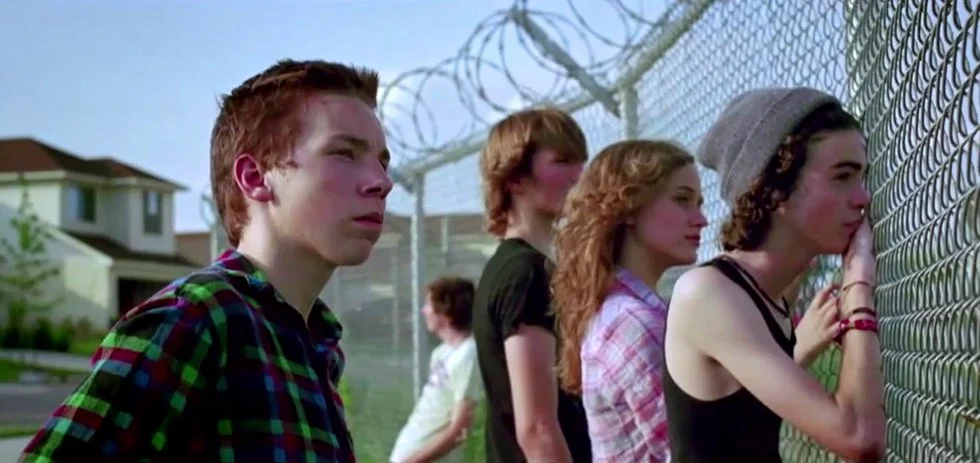In this critical analysis, we will explore Arcade Fire's music video for "The Suburbs," focusing on its visual and auditory aspects, narrative, symbolism, and the choice to create an entirely narrative video without featuring any musical artist performance. The exploration of social themes will be prioritized, emphasizing the emotional impact of the video over the technical aspects. The analysis will be structured thematically, beginning with a general discussion of the narrative and themes, followed by specific examples with timecodes to support the discussion.
Narrative and Themes
Arcade Fire's music video for "The Suburbs" presents a compelling narrative set in a suburban neighborhood where a group of friends spend their time together amidst an ongoing conflict. The video captures the innocence of youth and the harsh realities of war, touching on rites of passage and coming of age. The decision to create a purely narrative video without featuring any musical artist performance allows for a more immersive and emotionally impactful viewing experience, as the viewer becomes more invested in the characters and their story.
Symbolism
Symbolism is used effectively throughout the video to enhance the depth of the themes presented. For instance, the recurring image of bicycles represents both freedom and the fleeting nature of youth, as the friends use them to explore their environment and escape the chaos around them. Additionally, the military presence and the sudden intrusion of violence into the characters' lives serve as a stark reminder of the realities of war and its impact on innocent lives.
Emotional Impact and Connection
The emotional resonance of the video is one of its most striking aspects. The nostalgic portrayal of youth and the strong bond between friends evoke a sense of longing and reminiscence in the viewer, while the jarring scenes of violence and conflict create a sense of unease and sadness. The juxtaposition of these emotions highlights the loss of innocence that accompanies coming of age in a world marred by conflict.
Specific Scenes and Examples
To further illustrate the themes and emotional impact, let us examine some specific scenes from the video with corresponding timecodes:
Abandoned House Exploration (01:17 - 01:44): The friends are playfully exploring an abandoned house, symbolizing their carefree youth and the temporary nature of their innocence. The scene is later contrasted with the dramatic arrest of one of their friends, a heart-wrenching reminder of the harsh realities that surround them.
Bike Ride Through the Field (02:30 - 02:45): The friends ride their bikes through a field as the sun sets, evoking a sense of freedom and adventure that is often associated with childhood. However, this idyllic moment is disrupted by the sudden appearance of a military vehicle (02:46 - 02:50), emphasizing the omnipresent threat of war and its intrusion into their lives.
Friends Pretending to Fight (00:38 - 00:50): The friends engage in a playful mock fight, mimicking the conflict they witness in their surroundings. This scene highlights their innocence and the way children often imitate what they see, even when it comes to serious issues like war.
Military Checkpoint (03:20 - 03:27): The group of friends encounters a military checkpoint while riding their bikes, symbolizing the ever-present threat of conflict and the way it seeps into their everyday lives. This scene showcases the loss of the carefree nature of childhood as they are forced to confront the reality of their situation.
Arrest and Subsequent Release (04:28 - 04:56): One of the friends is arrested by the military, heightening the emotional impact and sense of injustice felt by both the characters and the viewer. However, when he is later released, it offers a glimmer of hope amidst the darkness and demonstrates the resilience of friendship in times of adversity.
Conclusion
In conclusion, Arcade Fire's music video for "The Suburbs" masterfully weaves together its narrative, symbolism, and emotional impact to explore social themes such as rites of passage, coming of age, friendship, and war. The decision to create an entirely narrative video without featuring any musical artist performance allows the viewer to become fully immersed in the story and emotionally connected to the characters. Through its poignant portrayal of youth and the realities of conflict, the video serves as a powerful reminder of the complexities of growing up in a tumultuous world.


